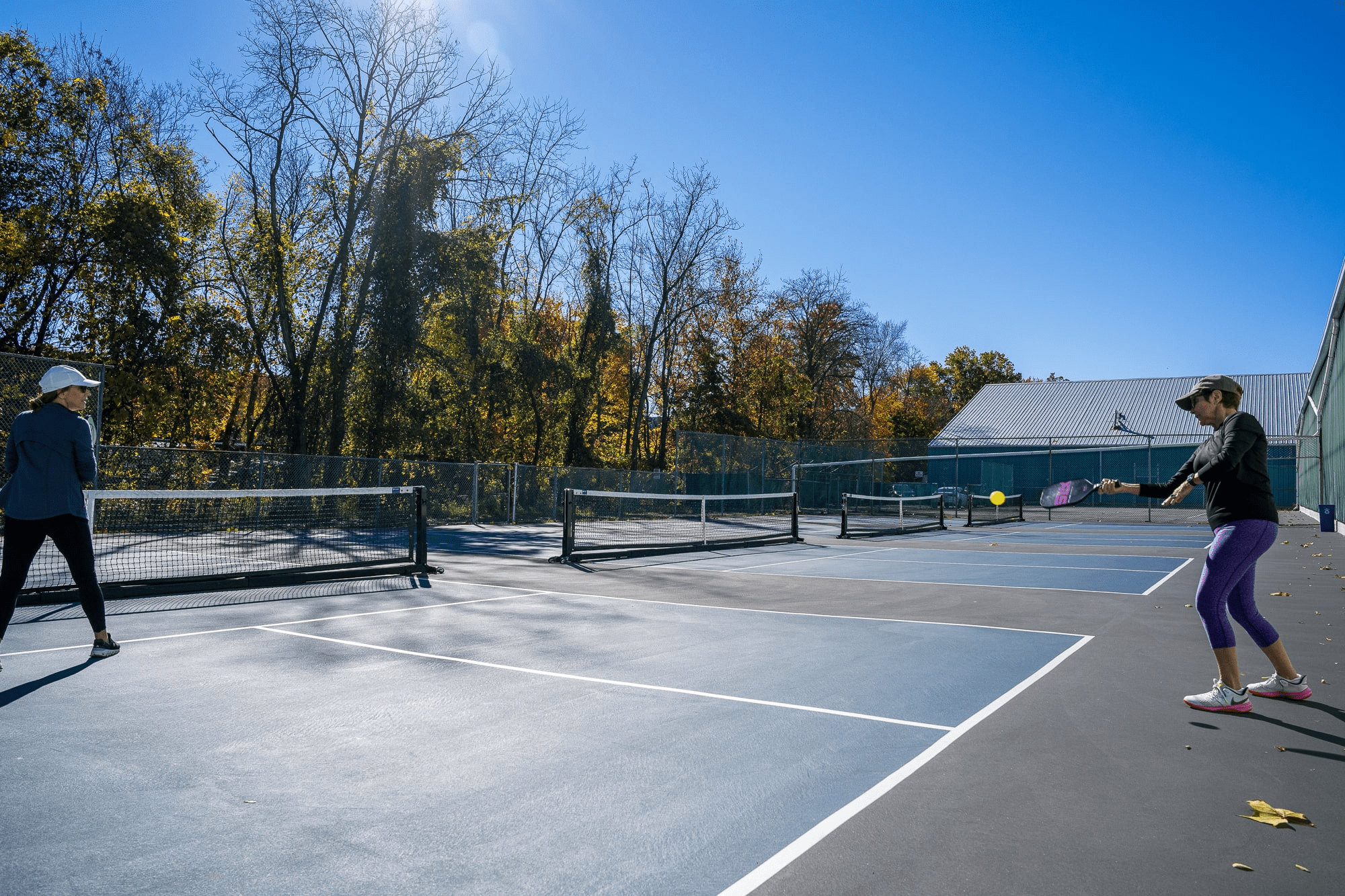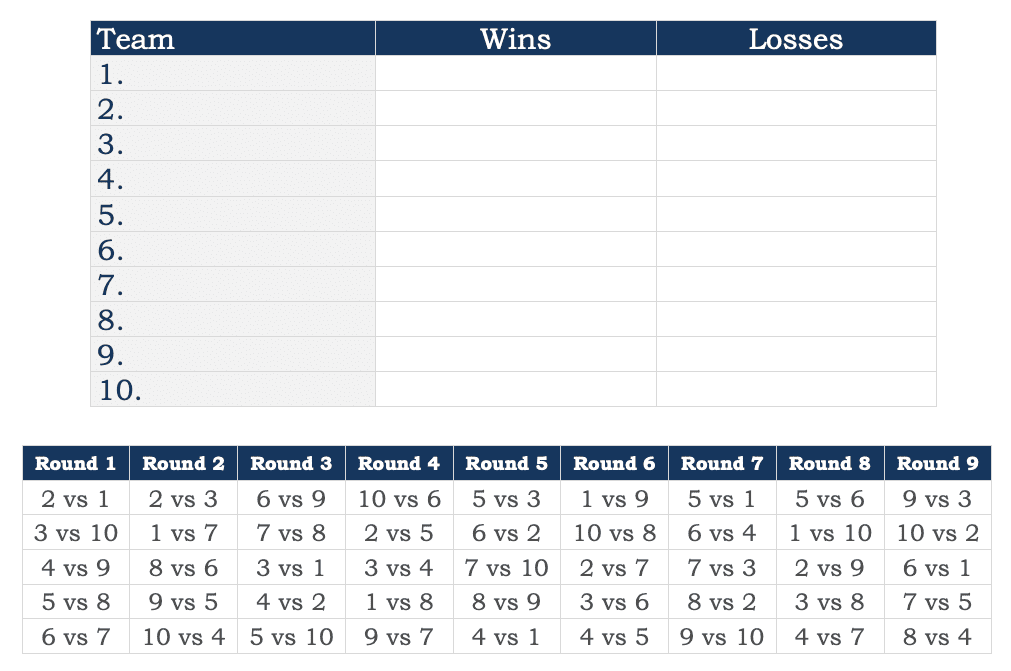Are you ready to take your pickleball tournament skills to the next level? If you’re looking to organize a fun and competitive event for players of all levels, the pickleball round robin format might be just what you need.
This post will dive into the ins and outs of setting up and running a successful round robin tournament. Whether you’re a seasoned pickleball pro or new to the game, this guide has something for everyone.
So grab your paddles, and let’s get started!
Table of Contents
ToggleHow Do You Play Round Robin In Pickleball?
In a round-robin format, participants are divided into individual players or teams, facing off against every other player in the tournament. The goal is to win as many matches as possible and earn the highest ranking. Unlike a single elimination tournament, you still can be crowned champion if you have a bad match or lose and game.
At the end of the round robin play, players are typically ranked based on their win-loss record. The top players may advance to a championship bracket or win the tournament outright.
Different Types of Round Robins
Yes, there are a few different ways to set up a round-robin tournament, depending on the number of teams or players and the length of the tournament. Matches are typically scored to eleven or fifteen points, winning by one point.
Normal Round Robin
In a “full round robin,” every player faces every other player once, resulting in a maximum number of matches. For example, in a pool of 8 players, there would be 28 matches (7 games for each player). At the end of the tournament, all player’s scores are added up and whoever has the most wins is the champ. As a result of a tie, there would be play-off rounds to determine the winner.
Double Round Robins
A double round-robin is where all players meet twice in the tournament, which makes for a longer tournament format if you have a lot of players. A double round-robin is best suited for a smaller group of pickleball players.
Need to brush up on the pickleball rules? Check out all of our posts here.
Round Robin To Single-Elimination Format
It is also possible to structure a tournament in which the top players from the round-robin play advance to a single-elimination playoff. This allows for an equal playing opportunity for all players and adds excitement for those who make it past the preliminary rounds. The knockout tournament at the end of the play is an exciting addition to any tournament format.

What are the Round Robin Rules and Scoring?
Round-robin tournaments follow different rules depending on the number of players or teams involved. Typically, each player or team plays against every other player or team once, and they are awarded points based on the outcome of their match. The team determines the winner with the most points. If two or more teams have the same number of points, tiebreakers are triggered. The tournament can also end with a knockout round or double-elimination format to determine the winner.
Round-robin rules may also include a specific point system, such as 2 points for a win, 1 point for a draw, and 0 points for a loss. Always set rules for what happens when a match is not completed, such as handling byes or forfeits. Games should be played to 11 or 15 points, with a winning margin of one point.
Tournament organizers can also configure more complex settings, such as the tournament format (full round-robin or double round-robin), match length, scoring rules, tiebreakers, and more. Once the rules and regulations are in place, the event is organized, and a tournament schedule is created.
What are the Benefits of Round-Robin Play?
One of the main benefits of a round-robin is that it allows all players to have multiple matches and a chance to improve their skills and ranking. It also helps to ensure a fair and balanced tournament, as every player can play against various opponents. Additionally, a round-robin system can be less stressful for players, allowing for a more relaxed and social atmosphere than a single-elimination bracket. Teams playing other teams with varying skill levels can improve people’s games and adds excitement to the sessions.
Read Next: Ladder League In Pickleball: How To Become a Better Player.

What are the Disadvantages of Round Robin Tournaments?
One of the major disadvantages of running a round-robin tournament is that it can take a lot of time and resources to organize and run. Because each player or team competes against every other player, there may be many more matches than in a single-elimination bracket. This means you must have enough courts, enough referees, and enough time to organize and run the tournament. Additionally, you must set up a system for ranking players that is fair and equitable.
Finally, if some players are significantly better than others, it can be difficult to make sure that all players are having fun. A round-robin tournament determines the ultimate winner through a series of matches over multiple rounds.
This means that teams that don’t play well still have to play their remaining games, even if they have no chance of ultimately winning the tournament. As a result, matches may be played late in the competition between teams with no chance of being crowned champions.
How do you Arrange a Round Robin?
Round-robin tournaments can be structured in various ways, depending on the number of players involved, the rules and scoring format you decide to use, and whether or not it will transition into a single-elimination playoff.
The best way to organize your tournament is to create a plan detailing all aspects of the event, including scheduling, scoring, tiebreakers, and any additional rules.
Here is an example of how you could structure an 8-team tournament:
- Have each team play every other team once. This will result in 28 matches in total.
- Rank the teams based on their win-loss record. The team with the most wins will be ranked first, and the team with the fewest wins will be ranked eighth.
- If there is a tie for first place, consider using tiebreakers such as a head-to-head record or point differential to determine the top-ranked team.
- The top four ranked teams can then advance to a championship bracket, competing in a single-elimination tournament to determine the overall winner.
- The remaining teams can compete in a consolation bracket to determine fifth through eighth place.
This is just one example of how an 8-team round-robin tournament could be structured. There are many other ways to set up a round-robin, depending on the number of teams, the length of the game, and any additional rules or considerations.

What is a Berger Table?
The Berger table consists of a grid with rows and columns, each representing a player or team and each representing a match. The matches’ results go into the grid’s appropriate cells. The final standings are determined by calculating each player or team’s number of wins, losses, and ties.
The Berger table ensures that all players or teams are ranked fairly based on their performance in the tournament. It is a helpful tool for organizing and managing tournaments and helps to ensure that the results are accurate and unbiased.
Tips For Running a Succesful Tournament
For a pickleball round-robin to go off without a hitch, there must be sufficient court space, willing volunteers, and necessary supplies. When there aren’t enough courts, people have to wait to play, which wastes time and irritates the players. Having enough volunteers to help with things like checking people in, setting up games, and keeping scores is also essential.
Using tournament software is one option for keeping track of games and scores. These apps simplify the event by letting you enter player data, arrange match times, and keep score. I’ve used Tourament Manager Pro a few times, and it does the job. It’s available for Apple and Android devices. You could also choose to have someone keep score manually on a paper bracket system.
The event’s success also depends on the team’s ability to communicate and organize effectively. It is necessary to ensure that participants understand the rules and timetable, that all volunteers are aware of their obligations, and that there is a strategy for dealing with unforeseen problems. Your pickleball round-robin tournament will go off without a hitch if you put in the time and effort to organize and prepare for it properly.
Wrapping Up
Hopefully, this guide has given you the information you need to organize a successful pickleball round-robin tournament. You can create a fun event for everyone with careful planning and attention to detail! Good luck & have fun!
Organizing a pickleball tournament can be a great way to bring together new and experienced players for a fun competition. Whether you go with the traditional tournament formats or something more creative, following the steps in this guide will help you set up a successful event.
With the proper planning, you’ll be able to host an exciting tournament and create lasting memories for all your participants. Good luck!
Read our latest post: Avoiding Faults in Pickleball.

